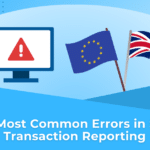SFTR Reporting
Simplified
Securities Financing Transactions Regulation
SFTR stands for Securities Financing Transactions Regulation. It is a United Kingdom and European Union (EU) financial sector regulation that aims to increase the transparency of securities financing transactions (SFTs) in order to mitigate potential risks to financial stability.
What does it stand for?
Securities Financing Transactions Regulation
What does it focus on?
A repurchase transaction (REPO); securities or commodities lending and borrowing; a buy-sell back transaction or sell-buy back transaction; and a margin lending transaction.
What is its purpose?
Increasing transparency in securities financing markets by introducing reporting requirements
Reporting obligations
All investment firms are required to report Securities Financing Transactions (SFTs) to an authorised Trade Repository (TR).
Since 13 July 2020, investment firms have been required to report Securities Financing Transactions (SFTs) to an authorised Trade Repository (TR) under Article 4 of the Securities Financing Transactions Regulation (SFTR). Due to Brexit, the EU regulations have been onshored as UK SFTR under the European Union (Withdrawal) Act 2018. On this page, SFTR refers to both EU and UK versions of the regulation unless otherwise specified.

EU SFTR
The original regime remains in force for EU member states. It continues to evolve under ESMA.
VS

UK SFTR
The SFTR regime was onshored into UK regulation. Over time it will diverge from the EU version as the FCA updates it.
SFTs are transactions that involve the borrowing and lending of securities, such as stocks, bonds, or other financial instruments, against the collateral of cash or other securities. These transactions are commonly used by financial firms as a method of financing trades and hedging risks.
The scope of the regime includes:
a repurchase transaction (REPO)
securities or commodities lending and borrowing
a buy-sell back transaction or sell-buy back transaction
a margin lending transaction
Who has the obligation to submit transaction reports?
| EU | UK |
|---|---|
| Both financial counterparties and non-financial counterparties (excluding a small non-financial counterparty (NFC-)) have reporting obligations, which cover the following: 1. EU based entities including all its branches, irrespective of where they are located; and 2. non-EU entities where the SFT is concluded by an EU based branch. Obligations for non-financial counterparties (except NFC-) commenced on 11 January 2021. See below the mandatory obligations for NFC-s.* | Financial counterparties which cover the following: 1. all UK based entities; and 2. third country branches of UK based entities have SFTR reporting obligations. Non-financial counterparties don’t have any of these obligations. |
Stay in the know
Sign up to TRAction's newsletter
Obligations
What to report and to whom?
SFTR requires the following information to be included:
- counterparty data, including Legal Entity Identifiers (LEIs);
- loan and collateral data, including Unique Transaction Identifiers (UTIs);
- margin data; and
- reuse information.
Reports are to be submitted to an authorised Trade Repository (TRs).
Note DTCC is presently the only authorised TR under UK SFTR.
When do reports have to be made?
They are required to be submitted to an authorised TR by no later than one working day after the day the SFT has been entered into (T+1).
For transactions that were entered into on or before the regulations start date, they are in scope if they either:
- have a remaining maturity exceeding 180 days after the start date; or
- have an open maturity and actually remain outstanding for 180 days after the start date. In this case, the transactions must be submitted within 190 days of the start date.

What format is required?
File submissions are required to be made to an authorised TR in ISO 20022 eXtensible Markup Language (XML) format. XML is a markup language similar to HTML, which is the most common language for building websites. XML is becoming the standard for financial information exchange and is currently or soon to be used in many other regulations like MiFiR, EMIR-Refit and SWIFT.
Mandatory delegation under EU SFTR
If a transaction is entered between a financial counterparty and a NFC-, the financial counterparty is required to report for both sides.
*A NFC- means a non-financial counterparty which does not exceed the limits of at least 2 of the 3 following criteria:
- balance sheet total – EUR 20,000,000
- net turnover – EUR 40,000,000
- average number of employees during the financial year is over 250
Streamlining processes
Gathering, validating, and submitting enormous volumes of data can be a laborious and complex operation. TRAction’s solutions automate data collection, transformation and submission to expedite this procedure. By utilising cutting-edge technology, these solutions drastically minimise the amount of manual labour necessary, lowering the possibility of errors and enhancing data accuracy.
e-book
Reporting Guides
Need help with your reporting obligations and compliance strategy?
TRAction has developed multiple guides to help you along your compliance journey including our popular The User Friendly Guide to Transaction Reporting in Europe.
Get free access to our guides today at the button below.

Pricing packages
How much does it cost?
We charge a combination of an account management fee and a cost per transaction/position. Contact us for a quote, or view our pricing page for more information.
SFTR Reporting
-
£0 Initial set up cost
-
£0.03 Cost of transactions or collateral, per upload
-
£2000 Annual Repository Viewing Access Fee (Optional)
Further information
As a delegated reporting service provider, TRAction is asked a lot of questions regarding EMIR, MiFIR, and SFTR. That's why our team has put together some of our most frequently asked questions, so that you can learn how to seamlessly report transactions under multiple regimes. Read more.
There are a number of reporting regimes including EMIR, MiFID II/MiFIR, SFTR and Best Execution, all of which affect Investment Firms (IFs) in different ways. Read more to see the requirements for IFs.
We all know that meeting all the requisite trade/transaction reporting obligations can pose a considerable cost to an investment firm. While the regulatory burden is not going to disappear, it can be minimised by outsourcing and choosing the most cost-effective and efficient option for you. Read more.
TRAction has identified common mistakes in SFTR trade reporting data. Ensuring the completeness and accuracy of your trade reporting is important and hence you should take time to review your process against the list below:
- Incorrect Action Type used for a previously submitted report
- Incorrectly formatted dates
- Incorrect timeline
For TRAction’s guidance on how to prevent or rectify the above errors, read more.
A repurchase agreement (repo) is a form of short-term secured loan where one party sells securities to another and agrees to repurchase those securities later at a higher price with the securities serving as collateral for the borrower. To learn why repurchase agreements exist and how they are reported, Read more.
The core trade/transaction reporting obligations under EMIR/MiFIR/SFTR in the EU and UK are fundamentally the same. However, there are some changes in the scope of reporting after Brexit depending on the locations of investment firms, nationality of clients, and jurisdictions of Trade Repositories (TRs) or Approved Reporting Mechanism (ARMs). Read more.
There has been a lack of clarity in bilateral margin reporting for repo transactions from their trade level collateral in accordance with the Global Master Repurchase Agreement (GMRA). The European Repo and Collateral Council (ERCC) division of the International Capital Market Association (ICMA) has worked closely to release a guide to best practice in the European Repo Market. See the proposed approach here.
ESMA clarified the reporting requirements in relation to Securities Financing Transaction (SFT) settlement fails in a Q&A. Due to the various ways in which settlements can fail (i.e., completely, partially, or before or after the SFT maturity date), it can cause confusion in respect of your obligations. TRAction simplifies when you need to report and when you don’t.
A recent report published by the European Securities and Markets Authority (ESMA) shows more effort is needed to improve trade data quality. The report also sheds light on why firms are failing to produce high quality trade data. See more on how you can improve the accuracy of your trade data.
There are certain fields within the reporting regimes of EMIR, MiFIR, SFTR, ASIC, MAS and Canada, which require populating with an LEI.
Check out our article, where we detail regimes and LEI fields for population and validation.
Contact us
Can't find the answers you're looking for?



